Discover B&H Photography Podcast
B&H Photography Podcast

B&H Photography Podcast
Author: B&H Photo & Video
Subscribed: 4,466Played: 96,301Subscribe
Share
© B&H Photo & Video
Description
The B&H Photography Podcast: Join us every other week for a conversation with insightful and entertaining guests. From gear and technique to history, science and art, we discuss the issues most important to the contemporary photographer.
443 Episodes
Reverse
Join Deanna as she welcomes professional side-quester, storyteller, and video editor, Mylene Mae (@mylenesmind). Mylene shares her personal journey, including how she pivoted from working in STEM and got started in video, as well as her learning process and the struggles of digesting long-form content. They discuss the importance betting on yourself, staying curious, and forgetting the metrics and finding the fun in content creation. Credits: Host & Creative Producer: Deanna Testa Creative Producer: Elena Maidebura Creative Editor: Larissa Mattei Technical Producer: Mike Weinstein Executive Producer: Richard Stevens
Photographs preserve what daily life cannot—moments that would otherwise fade into obscurity. In today's show, we explore this topic through a nexus of American culture, popular folklore, and photographic archives in a chat with Alan Govenar and Adam Forgash, two photographers and visual historians who are passionate about unearthing and preserving forgotten stories. Coming from different backgrounds, Alan's formal training and experience with the non-profit Documentary Arts complements Adam's hands-on skills hunting for treasures and selling vintage photographica at New York's Chelsea Flea Market. A few of the points they discuss include: the central role of the community photographer in twentieth-century life, the cultural significance of Route 66 as a favored connection point, the painstaking process of resurrecting century-old portraits from damaged glass plates, and much more. As Adam notes about these rescued portraits now titled "Faces of the Mother Road," "I've had these kinds of collections over the last 30 years and kind of let them go, but this one, I knew there was something special about it. So, as soon as I realized what I was looking at, I stopped. I put it in climate control storage. I got archival paper to put it in. I started a numbering system. "It feels pretty good," he adds, "to get more serious about my craft, realizing that I am a photo historian, even though I don't have a degree." Guests: Alan Govenar & Adam Forgash Episode Timeline: 3:07: Alan Govenar's early connections to photography and his introduction to Stoney, the hunchbacked tattoo artist who jumpstarted his photo career. 8:33: The role various media has played in Alan's work as an interdisciplinary artist and how changes to media has influenced his storytelling. 11:37: Adam Forgash describes New York's Chelsea Flea Market and the treasure trove of 8,000 glass negatives he discovered there. 16:18: A peek into the Texas African American Photography Archive, and the era of the community photographer. 22:02: Storytelling within a historical context and a photographer's accountability in reverse engineering a story from vestiges of the past. 27:01: Adam's accidental discovery of a second half to SJ Tyler's archive and tracking down information about the photographer. 30:49: Connecting the story of SJ Tyler's portrait studio to an exhibit celebrating the centennial of Route 66. 32:28: Episode Break 33:47: Making distinctions between Alan's formal education in folklore and Adam's schooling at the hands of New York's Chelsea flea market crowd. 40:23: Adam's approach to beginning this project, and how SJ Tyler's collection differed from past archives he's worked on. 42:52: Connections between Tyler's photographs and the significance of travel on Route 66, plus Adam's relationship to Tulsa. 44:26: Placing photographic stories in a wider historical context and their connection to the communities being served. 49:54: Funding and sponsorship for large photographic projects and the benefits to working with a registered non-profit as a pass-through organization. Guest Bios: Alan Govenar is an acclaimed photographer, filmmaker, writer and folklorist. A 2010 Guggenheim Fellow and the author of more than 40 books, Alan is also founder and president of the organization Documentary Arts, which he created to spotlight marginalized voices and cultures, through projects such as the Texas African American Photography Archive. As a filmmaker, Alan has produced and directed documentaries in association with NOVA, ARTE, and PBS. And as a playwright, he has written and produced musicals that have been performed from New York City to major venues across Europe. This year marks some major milestones in Alan's career, with a photography retrospective at the Center for Photography at Woodstock, a new documentary film premiering at New York's Cinema Village, and the publication of three new books, including Kinship & Community, released by Aperture. Adam Forgash is a photographer, filmmaker, photo history specialist, and proud former Oklahoman. In 2023, while foraging for visual treasures at New York's famed Chelsea Flea Market, Adam happened upon the archive of the undiscovered portrait photographer Sidney J Tyler. From 1913 to 1943, Tyler operated a photo studio in Afton, Oklahoma, making portraits of everyday subjects as they passed through the region, during a break in their travels along Route 66, otherwise known as the "Mother Road". This once-lost visual history of northeast Oklahoma features working-class people of all races and communities, including the famed Tuskegee airmen. After two years of intensive research into Tyler's archive, Adam's project, now titled Faces of the Mother Road: The Lost Portraits of S.J. Tyler - A Route 66 Story, is poised to make a lasting impact on Oklahoma's visual and historical narrative, just in time for the centennial of Route 66 in 2026. Stay Connected: Alan Govenar Documentary Arts Website: https://www.docarts.com/ Adam Forgash Website: https://adamforgash.com/ Adam Forgash Instagram: https://www.instagram.com/adamforgash/ Credits: Host: Derek Fahsbender Senior Creative Producer: Jill Waterman Senior Technical Producer: Mike Weinstein Executive Producer: Richard Stevens
In Episode 7, host Deanna Testa sits down with the vibrant and hilarious, Tolú Ekundare (@tolukundare) to spill the tea on what it takes to grow as a modern creator. Tolú shares how she landed two big Netflix shows, the challenges of getting started in the podcasting space, and how she continues to build her own brand while staying her most authentic self. Credits: Host & Creative Producer: Deanna Testa Creative Producer: Elena Maidebura Creative Editor: Larissa Mattei Technical Producer: Mike Weinstein Executive Producer: Richard Stevens
News reporting has got to be one of the toughest markets for a visual journalist to crack. But the whirlwind of 24/7 news cycles and the pressures of telling human stories in rural news deserts have not deterred today's guest, Keren Carrión, a photojournalist and short form video producer currently working on the NPR visuals team. Follow along as we chart Keren's evolution from stills to documentary video stories to vertical social media clips that can be absorbed in two minutes or less. We also learn about the many opportunities for feedback and career advancement she's explored, and the mix of internships and mentorship programs that have been central to her career success. When asked about parting advice for current students she notes, "I think it's really important to have a visual voice. And the only way to find that is to keep shooting. Yeah. And I will also say meet with as many people as possible, be mentored, go to portfolio reviews figure out how to elevate that voice." Guest: Keren Carrión Episode Timeline: 2:28: Keren's early photo experiences, pairing pictures with stories for her high school paper. 5:05: Adding video to the mix in college and how this has influenced her storytelling. 10:40: Keren's advice to college students: Seek out networking and internship opportunities. 12:17: Momenta Workshops and other non-profit mentorship programs, and how these opportunities can shape creative vision and skills. 20:20: Working with Report for America in Texas, covering under-reported stories and rural news deserts. 26:22: The evolution of news media and Keren's work at NPR to create short form videos for distribution across social media platforms. 31:12: Keren's current gear, from iPhones to Sony mirrorless cameras, for shooting vertical videos 35:32: Non-traditional news reporting and how user-generated content is now shared by larger news organizations. 38:28: Keren's future aspirations to evolve with the industry and learn new skills as platforms and audiences change. 39:56: More advice for the next generation: Keep shooting to find and elevate your visual voice. Guest Bio: Keren Carrión is a photojournalist and a short-form video producer currently working on the NPR visuals team. Originally from Puerto Rico, Keren graduated from George Washington University in 2019 with a BFA in Photojournalism. Prior to her current role, she spent two years as a photojournalist for KERA News, NPR's affiliate station in Dallas through Report for America. She has also worked with CNN as a video editor in Atlanta, and interned with Univision, USA Today, The Hill, and the New York Times Student Journalism Institute. Additionally, Keren is an alumna of the Eddie Adams Workshop and Momenta Photo Workshop's Project Puerto Rico. When Keren isn't working, she's probably sitting in the window seat of an airplane, heading to a new destination. If not, you can always find her with a camera in hand — or petting the nearest dog. Stay Connected: Keren Carrión Website: https://www.kerencarrion.com Keren Carrión Instagram: https://www.instagram.com/kerencarrionphoto Keren Carrión on LinkedIn: https://www.linkedin.com/in/keren-carrion Keren Carrión at Report for America: https://www.reportforamerica.org/members/keren-carrion/ Keren Carrión at NPR: https://www.npr.org/people/1213266959/keren-carrion Credits: Host: Derek Fahsbender Senior Creative Producer: Jill Waterman Senior Technical Producer: Mike Weinstein Executive Producer: Richard Stevens
In this episode, we sit down with New York-based photographer and content creator Brandon Woelfel (@brandonwoelfel) to discuss his personal journey as well as the growing pains of being modern creator and photographer. Brandon shares how fine art led him to taking photos, adapting to the ever-changing social media landscape, gaining confidence in one's own work, educating in the space, and even leveraging AI. Whether you're a photographer, filmmaker, TikTok star, podcaster, or just starting your creative journey, this conversation is full of insight, motivation, and practical advice you can use right now. Episodes drop every other Thursday. Hit subscribe and join the B&H Creators community for more unfiltered conversations with creators shaping today's culture. Guest Bio: Brandon Woelfel Brandon Woelfel is known for his dreamy portrait photography. His creative use of lighting and color lend a unique sense of intimacy to his portraits that makes his work instantly recognizable. He's also the author of two photo books, Ultraviolet and Luminescence. Credits: Host & Creative Producer: Deanna Testa Creative Producer: Elena Maidebura Creative Editor: Larissa Mattei Technical Producer: Mike Weinstein Executive Producer: Richard Stevens
Although they cater to different senses, photography and music share much in common. In both these arts, timing, rhythm, and mood are key. It's been a while since we've mixed photography and music on the show, so we're particularly excited about today's chat with two photographers who share a passion for documenting musicians and their fans—in particular, devotes of punk and indie rock. From early memories of being truly moved by music to practical tips about photo access, image rights and restrictions, plus the complexities of organizing your work for a book, the conversation doesn't miss a beat. So, turn up the volume as Bootsy Holler reminisces about dropping into the Seattle music scene in the early 1990's to capture the raw energy of her favorite bands, now compiled in the book Making It: An Intimate Documentary about the Seattle Indie, Rock and Punk Scene. And Chris Ortiz describes how the house parties he captured at a punk commune in Kansas served as the foundation for his skills as a music photographer with a keen eye for differentiating himself in the photo pit. As Chris points out when it comes to preparing for a show. "It goes back to knowing that music and knowing the band, and being able to sit back and say, Yes, I am a fan of the band, but I also am professional, so this is what I'm going to look for when the band comes out." Guests: Bootsy Holler & Chris Ortiz Episode Timeline: 3:20: Bootsy Holler recalls her early days dropping into the Seattle music scene, photographing garage bands and dive bars. 9:41: Chris Ortiz talks about his start in photography, and his time photographing house parties at a punk rock commune in Lawrence, Kansas. 12:01: The difference between documenting live music and making portraits of musicians, where you need to develop a rapport with your subjects. 17:32: A tip of the hat to Chris as a longtime podcast superfan, plus what he's learned from listening to our 10-year archive of shows. 20:20: Bootsy's early stylistic influences and its effect on her art and music photography. 25:54: The earliest memory of being truly moved by music and the songs Bootsy and Chris were listening to when they truly got it. 31:56: Applying the inner feels of music to photographing a concert and connecting with the rhythm to grab key moments. 39:00: Negotiating access, shooting from the photo pit vs the side of the stage, plus differentiating your pictures from other photographers' work. 48:00: Episode Break 48:56: Chris talks more about current dynamics for gaining access when shooting music and concerts. 53:44: Current limits on concert photo usage and restrictions on contracts offered by some artists and entertainment companies. 58:28: Legal parameters related to pictures in Bootsy's book, plus the difference between concert pictures and portrait situations. 1:02:26: Bootsy's nine-year process of assembling a book, working with a designer for big picture decisions, plus leaving room to break the rules. 1:08:09: Finding publishers, choosing between options, plus the importance of owning the rights to your images. 1:10:20: Bootsy and Chris name the band at the top of their bucket lists to photograph. Guest Bios: Bootsy Holler has spent 30 years capturing the essential personality and emotions of her subjects. Best known for her work as a portraitist, Bootsy's journey began with intimate depictions of herself and friends at the center of Seattle's pivotal music scene during the early 1990s. These formative years at both ends of the lens cemented her style as well as the methodology behind her empathic and journalistic approach. Bootsy's work has been recognized by the Society of Photographic Journalism and twice selected for the Critical Mass Top 50. Her photos have been exhibited and published internationally and are included in the permanent collection of the Grammy Museum. In 2019 she published the monograph, TREASURES: objects I've known all my life. Most recently, her book Making It: An Intimate Documentary about the Seattle Indie, Rock and Punk Scene, was released by Damiani books. Stay Connected: Website: https://bootsyholler.com/ Instagram: https://www.instagram.com/bootsyholler/ Facebook: https://www.facebook.com/shop.BootsyHoller/ YouTube: https://www.youtube.com/@BootsyHoller Chris Ortiz has enjoyed a relationship with photography since age six, when he learned the basics from his stepfather. He's specialized in music and documentary subjects since 1998, shooting with both digital and medium format black and white film. After earning a bachelor's degree in art history, Chris obtained an MFA in photography from the Savannah College of Art and Design. Select documentary projects include Portraits of Latinx Identity, and We Are All We Have Tonight, featuring portraits and personal narratives from punk rock enthusiasts, describing each subject's connection to the scene. Additionally, Chris works as news editor for the Prescott Daily Courier, covering area news and events. Stay Connected: Website: https://www.chris-ortiz.com/ Instagram: https://www.instagram.com/fastboyent/ Credits: Host: Derek Fahsbender Senior Creative Producer: Jill Waterman Senior Technical Producer: Mike Weinstein Executive Producer: Richard Stevens
Welcome to the fifth episode of the B&H Creators Green Room Podcast! In this episode, we sit down with viral street photography creator David Guerroro to discuss what it takes to grow as a modern creator. David shares how he got started in content creation, tips for building an audience, the importance of believing in yourself, photographing strangers, and advice for going viral. Whether you're a photographer, filmmaker, TikTok star, podcaster, or just starting out, this conversation is full of motivation, insight, and practical advice you can use right now. Hit Subscribe and join the B&H Creators community for more unfiltered conversations with the creators shaping today's culture. Guest Bio: David Guerrero Title: Street Photographer & Content Creator Through authentic storytelling and viral content, David Guerrero from Texas has built a global audience inspired by the connection between photography and humanity. David is best known for his signature approach of stopping strangers with, "Hi, excuse me? You look cool — can I take your photo?" His candid portraits have earned him following of more than 4 million people and over 1 billion views across platforms, showcasing the beauty of people around the world. Stay Connected: Instagram: https://www.instagram.com/dgphotoholic?igsh=c2M0eHRvNG5md2N4 Credits: Host & Creative Producer: Deanna Testa Creative Producer: Elena Maidebura Creative Editor: Larissa Mattei Technical Producer: Mike Weinstein Executive Producer: Richard Stevens
"Inspiration doesn't have an age gap… Maybe you've heard it 100 times before, but this time it hits differently. Or this time, it's where it sinks in and you have that 'aha' moment." That's just one takeaway from our spirited conversation with Grace Mc Nally. From soaking up a passion for photography through an early mentorship program at NYC Salt to her decision to forgo college and continue learning on the job, Grace has forged an impressive path as a creative renaissance woman with a passion for community. As podcast host Derek Fahsbender notes about this chat, "Great advice is all around you. Experience is all around you. But if you're not soaking it in, if you're not learning from it, then it's not going to make you a better photographer. It's not going to make you a better person. You really have to take it and internalize it." So, sit back and be a sponge for some inspired creative insights! Guest: Grace Mc Nally Episode Timeline: 2:28: Grace's photographic beginnings, her father's influence as a full-time professional, plus discovering the NYC Salt mentorship program. 6:08: Studying photography on the job, plus the influence of mentors like Mark Mann and the program at D&AD Shift NY. 13:40: How Grace's vision has changed through various mentorship programs, how her early self-portraits compare with recent projects to serve others, plus the creative challenges that come with doing paid work. 21:09: Grace's work in art direction and discovering the value of being a photographer in a different stage of production. 23:02: The main inspiration for how Grace sees and its relationship to Irish culture. 24:58: The gear she works with—from her earliest experiments with the iPod Touch to current work with her iPhone and her Canon R6 MK II. 29:30: More on free work vs paid jobs. How do you find your value as a photographer? 34:25: Thoughts about having diverse skill sets, compartmentalizing and creating labels, and Grace's vision for her career moving forward. 38:15: Grace's most instrumental piece of advice for photographers just starting out—Don't stop shooting and don't delete your work! 40:57: Grace's current self-portrait series in the Irish landscape and other future projects. Guest Bio: Grace Mc Nally is a creative renaissance woman with a passion for community. Born & raised in Queens, New York by two creative & crafty Irish Immigrants, Grace has a diverse skill set, with more than 7 years of experience running her creative production house Allegro Photo Industries. During this time, she's trained under celebrity photographer Mark Mann, won a Scholastic Golden Key, worked as an Art Director at Area 23, spoken at the 2023 D&AD Awards, created content for Meta, captured icons like Chaka Khan, Lil Wayne, and Drake, been interviewed by Vice, and cast talent for Roblox. Grace also plays video games & football, produces an immigrant-centered cooking show, makes zines, directs music videos, performs spoken word, collects manga, colors with children, and teaches photography to teens at NYC Salt, where she was a student herself from 2016 to 2020. Stay Connected: Website: https://www.gracemcnally.com/ Instagram: https://www.instagram.com/grmcn/ Allegro Photo Industries: https://allegrophotoindustries.myportfolio.com/ NYC Salt: https://www.nycsalt.org/at-salt/2024/5/15/grace-mcnally-the-creative-directors-journeycreativity-hard-work-and-stunning-results Credits: Host: Derek Fahsbender Senior Creative Producer: Jill Waterman Senior Technical Producer: Mike Weinstein Executive Producer: Richard Stevens
In this episode, we sit down with viral ice cream creator Dylan Lemay to spill the tea on what it really takes to grow as a modern creator. Dylan shares how his content creation journey began, how he built his audience, and the importance of balancing life on and off social media. We also discuss his ultimate tips for going viral in 2025 and get a peak of the ice cream business behind the scenes. Whether you're a photographer, filmmaker, TikTok star, podcaster, or just starting out, this conversation is full of motivation, insight, and practical advice you can use right now. Guest Bio: Dylan Lemay Title: Content Creator Dylan Lemay, aka the Ice Cream Guy, is a creator and storyteller who blends food, interactive experiences, and creative video, taking you behind the counter to make the world's most iconic treats. Stay Connected: TikTok Instagram Credits: Host & Creative Producer: Deanna Testa Creative Producer: Elena Maidebura Creative Editor: Larissa Mattei Technical Producer: Mike Weinstein Executive Producer: Richard Stevens
How often do you think beyond the photos you make to consider the larger purpose they serve—both for yourself and, ideally, for a wider audience? In today's show, we explore this idea while connecting the dots between picture making, process, and purpose. Our guides for this conversation are nature/landscape photographer and mountaineer Matt Payne, and street photographer, portraitist, and YouTube storyteller Sean Tucker. While Matt and Sean have widely different photographic specialties, they share much in common, from educational backgrounds in psychology to a profound commitment in using photography to find purpose in life. Taking Matt's 567-mile through-hike of the Colorado Trail as a jumping off point, we explore how balancing such a mammoth feat of endurance with a creative pursuit led him to look inward and see the world around him anew. Beyond the how of making pictures, we discuss the all-important why's of photography—from being more intentional in your image making to forging connections between learning and failure in order to grow creatively. By the end of this chat you'll gain valuable insights about living and working with intention in world oversaturated by social media—where digital fatigue is a valid concern, and AI looms on the horizon. As Sean Tucker notes, "We've been given this gift that can also be a poisoned chalice. And we each need to decide for ourselves how we want to use it, beyond the addictive qualities. We need to take some responsibility and say, 'how much do I want this in my life so that it's useful? And where do I need to draw a line?'" Guests: Matt Payne & Sean Tucker Episode Timeline: 4:01: Matt talks about why he first started taking photos as an avid mountaineer, plus Sean describes his start and the first camera he had as a little boy. 8:52: Jung's concept of two halves to creativity—the morning and the afternoon of life—plus Sean's crisis point in his journey to making meaningful work. 15:06: Matt describes our modern addiction to dopamine and ways to become comfortable with introducing discomfort in your life. Plus, he looks back on his decision to focus full time on his photography two years after quitting his day job. 21:14: Knowing how you are wired and finding the place where your deep joy and the world's deep hunger meet to pump purpose into the universe. 26:36: Matt's 567-mile endurance hike of the Colorado Trail and how he balanced this with photography and creativity. 32:24: How to make sense of all the visual noise around you to become more intentional with your photography. 40:38: Episode Break 41:38: Find the magic by looking inward and asking yourself why you make the photos you do. 45:39: Sean's simple camera set up, which is infinitely better than gear that great photographers had access to 40 years ago. Plus, the creative tension between making a mess and maintaining consistency to progress in your work. 50:37: Sean describes the nuances that define his style of street photography and discovering a connection to Edward Hopper's paintings. 54:22: How to deal with creative slumps, places to look to for inspiration, plus making the space for new inspiration to come. 1:00:25: Making connections between learning and failure so to grow, plus digital fatigue and the desire to return to a pre-screentime era as an antidote to social media and AI. 1:10:06: How to remain relevant in today's saturated marketplace, and parting advice for using technology to promote your unique creative vision—make the work you want to see more of in the world. Guest Bios: Matt Payne is a nature/landscape photographer based in Durango, Colorado. After connecting with nature first as a climber and mountaineer, his relationship shifted to photography. Nature has an innate beauty that doesn't need to be exaggerated, so he strives to capture landscapes in ways that are truthful and ethical. In 2017, Matt launched the podcast F-Stop Collaborate and Listen as a way to dive into meaningful conversations with other photographers and industry leaders about photography, ethics, and the challenges of rapid environmental change. He is also co-founder of Nature First Photography, an organization to help increase ethical awareness in nature photography and the Natural Landscape Photography Awards to celebrate nature photographers who dedicate themselves to photographing and editing their work in a realistic fashion. Having already summited all 100 of Colorado's Centennial Peaks, in 2023 Matt completed a 567-mile hike across the Colorado Trail for his current project, The Colorado Way: a Book of Mountains Trails and Growth. Featuring over 140 images and 25 essays, this book blends photography, storytelling, psychology, and wilderness to reflect on what it means to live with intention, resilience, and awe. Stay Connected: Website: https://www.mattpaynephotography.com/ Instagram: https://www.instagram.com/mattpaynephoto/ Facebook: https://www.facebook.com/MattPaynePhotography/ YouTube: https://www.youtube.com/@MattPayne/ Sean Tucker is a photographer, filmmaker, author, speaker, and storyteller. Born in the UK, Sean spent most of his formative years in Africa, where he served as a youth pastor in South Africa during his 20s. Although that role is now behind him, Sean still carries a fascination with psychology and spirituality, which he brings to discussions around creativity. As a photographer and filmmaker, he's been fortunate to tell visual stories for individuals, NGOs, and multinational corporations across more than 20 countries. He's also helped organizations set up in-house studios and trained them to tell their own compelling visual stories. More recently, Sean built a large following online, both on YouTube and Instagram, where he talks about the "why" behind the things we make, seeking to inspire people on their own creative journeys. In 2021, Sean published the book, The Meaning in the Making to further share his philosophy for living a creative life. Stay Connected: Website: https://www.seantucker.photography/ Instagram: https://www.instagram.com/seantuck/ Facebook: https://www.facebook.com/seantuckerphoto/ YouTube: https://www.youtube.com/@seantuck/ Credits: Host: Derek Fahsbender Senior Creative Producer: Jill Waterman Senior Technical Producer: Mike Weinstein Executive Producer: Richard Stevens
In this episode we sit down with talented viral creator and musician Peet Montzingo to spill the tea on what it really takes to grow as a modern creator. Peet shares how he got started, how ADHD impacted his journey, the power of family, and his ultimate tips to going viral. Whether you're a photographer, filmmaker, TikTok star, podcaster, or just starting your creative journey, this conversation is full of motivation, insight, and practical advice. Hit Subscribe and join the B&H Creators community for more unfiltered conversations with the creators shaping today's culture. Guest Bio: Peet Montzingo Title: Creative Director, Producer, and Creator A multi-faceted artist with a curious and kind heart, whose talents span creating original content, music, literature, and so much more. Through his fascination with mysteries of the world to his deep bond with his family, Peet skyrocketed to fame, boasting millions of followers who find themselves deeply engaged and supportive of his endeavors. Peet often raises awareness for dwarfism with a lighthearted and charming presence, shining a loving light on his mother and siblings, all of whom are little people. Stay Connected: Instagram: https://www.instagram.com/p/C3Y9XZfRwSQ/?hl=en TikTok: https://www.tiktok.com/@peetmontzingo?lang=en YouTube: https://www.youtube.com/c/PeetMontzingo Credits: Host & Creative Producer: Deanna Testa Creative Producer: Elena Maidebura Creative Editor: Larissa Mattei Technical Producer: Mike Weinstein Executive Producer: Richard Stevens
Above Photograph © Patience Ojionuka How do you transition from being simply "a friend with a camera" to landing paid gigs with top fashion brands? All while juggling a budding photo career and the rigors of post graduate study, along with sharing insider tips to inspire your community on the side. We answer these questions and more in this, our second episode of Next Frame, a monthly podcast series shining a light on rising creative talents. Today's guest is Patience Ojionuka, a trendsetting creative known for multitasking between enviable photo assignments and working towards a PhD in psychology. We get the low down on her experiences in the power of pitching and the magic of sharing on social media. "There's always projects happening, and I think that is the biggest thing I learned," she explains. "There's nothing more powerful than sharing your work." Patience also admits, "I was waiting for the perfect time to start, which reminder to anybody listening, the perfect time to start is right now. I just posted it, and it got a reaction that I just wasn't expecting. And that could happen to you. That could happen to anyone." Guest: Patience Ojionuka Episode Timeline: 2:07: Patience Ojionuka's start in photography as an undergraduate doing senior portraits and school events. 4:09: Figuring out how to make photography fit into her life, plus getting past the stigma that part time artists don't have a stake in the industry. 6:20: Connecting with ASMP's Bridge Mentorship Program, how this changed her life, plus finding time, space, and resources to create at Shotti's LR2 Studio. 13:32: A love for lighting and the viral lighting tutorials Patience posts on TikTok. 17:19: How Patience has evolved as a photographer both technically and as a tastemaker. 19:56: A memorable assignment and the value of being kind and personable in a tough industry. 22:53: Learning the power of pitching and sharing your work on social media. 26:13: Patience's current social media strategy, plus the Instagram reel that changed her life. 29:16: Drawing inspiration from outside the photography world and merging the different parts of her brain. 32:58: The most important thing that Patience has learned from mentoring and aims to impart to others. 35:21: Where Patience aspires to be as a photographer five years from now, plus news about a recent project for Teen Vogue. Guest Bio: Patience Ojionuka is a queer, Houston-raised, NYC-based photographer and psychology PhD student. Specializing in fashion and portraiture, Patience has worked on and assisted in projects for Teen Vogue, Wall Street Journal, Self Magazine, Who What Wear, Allure, and has had clients such as Tinder, Lex App, and National University. Outside the studio, you can find her singing a cappella, editing videos, or probably inappropriately doing doctoral homework at a party. Stay Connected: Patience Ojionuka Website: https://patienceojionuka.com Patience Ojionuka Instagram: https://www.instagram.com/patienceojionuka/ Patience Ojionuka LinkedIn: https://www.linkedin.com/in/patience-o-051531212 Patience Ojionuka YouTube: https://www.youtube.com/@patienceojionuka/ Patience Ojionuka TikTok: https://www.tiktok.com/@patienceojionuka LR2 Studio: https://www.lr2.studio/about ASMP's Bridge Mentorship Program: https://www.asmp.org/newyork/the-bridge-program/ Host: Derek Fahsbender Senior Creative Producer: Jill Waterman Senior Technical Producer: Mike Weinstein Executive Producer: Richard Stevens
This episode we're talking to the multi-talented, Bea Chu. Bea dives into how her content creator journey began and how she balances education and creativity. We talk about creator communities and tips for improving your audio game. Guest Bio: Bea Chu is a content creator who started her career as a theatre sound designer and audio engineer. She has over a decade of video-creating experience, and gained popularity with her viral video "How to Turn Your Headset into a DIY Lapel Mic." Since then, she has been educating and inspiring fellow creators through insightful content about the creator economy, as well as producing engaging videos on cinematography, personal branding, and growing on social media. Click to Subscribe to the to the Creators Green Room Channel: https://linktr.ee/CreatorsGreenRoom Stay Connected: Instagram Credits Host & Creative Producer: Deanna Tesa Creative Producer: Elena Maidebura Creative Editor: Larissa Mattei Technical Producer: Mike Weinstein Executive Producer: Richard Stevens
"If you look very intensely and slowly things will happen that you never dreamed of before." This Aaron Siskind quote neatly sums up the deeply contemplative discussion we had with landscape photographers John Paul Caponigro and Joel Simpson in this week's podcast. Siskind's name is mentioned several times in our chat—as are many other 20th century photography legends—making this show both an exploration of photo history and an exercise in a holistic way to envision and record the world around us. Our focus on landscape quickly diverges from realistic depictions in favor of terrain that celebrates abstraction and metaphor. Follow along as we unpack the unwieldy term Pareiolia—the tendency to see familiar things in otherwise random patterns—and discover unique pathways to relate to the natural world. As John Paul Caponigro aptly points out, "I think of every exposure that I make as having a conversation with the subject and myself. I think of every move that I make in Photoshop as having a conversation with the image that started one way and is developing in another. And I ask, you know, what does the image want?" Guests: John Paul Caponigro & Joel Simpson Episode Timeline: 3:30: Joel Simpson describes his early landscapes as a way to re-experience being elsewhere. 9:24: Pareidolia: what it means and its relationship to Joel's photographs. 13:24: John Paul's relationship to the term pareidolia: a way to find patterns and make sense out of chaos. 19:12: The influence of Gestalt psychology when interpreting abstract patterns and photographing the bare bones of the earth. 24:55: Differences between making pictures with the aid of pre-visualization vs going in empty and refining ones' vision in post using digital tools. Plus insights about getting beyond the imitation phase to find a path to originality in your work. 35:58: How do you know when your unique vision from the pictures you make are ready to be released into the world? 42:12: Episode Break 43:24: John Paul's approach to post-processing—using the tools as a laboratory to make multiple iterations. 47:00: Joel describes the discoveries he made when finessing photos of a wonderous landscape from Zhangjiajie, China. 50:21: How does AI factor into crafting an authentic vision, plus the mind as the original AI. 1:03:18: Using photography to tap into things that haven't yet been discovered and elicit a sense of wonder from viewers' responses. 1:06:50: Joel and John Paul talk about the places that inspire their respective photographic projects. Guest Bios: John Paul Caponigro is a digital media pioneer, combining his painting background with a variety of photographic processes using the latest in digital technology. His work is about the perception of nature and the nature of perception. Widely respected as an authority on creativity, photography, and fine art printing, John Paul's images and writings are widely published in periodicals and books, and he's been a contributing editor to a variety of magazines and websites. He's also author of the video training series R/Evolution and the book "Adobe Photoshop Master Class," now in its second edition. As a highly sought-after speaker and educator, John Paul has presented lectures and workshops around the globe. His art has been exhibited internationally, and his prints are housed in numerous public and private collections. Select clients include Adobe, Apple, Canon, Kodak, and Sony, and he is a member of the Photoshop Hall of Fame, Epson's Stylus Pros, and X-Rite's Coloratti. Joel Simpson began making pictures as a teen in the 1960s, turning pro in 2002. Since that time, he's had more than 50 exhibitions in the US and abroad. His work has also been widely published and received numerous awards, including a Nautilus Gold Award for Art and Photography for his 2019 book Earthforms: Intimate Portraits of our Planet. His new book, Faces in the Rocks: Beyond Landscape to Psycho-Geological Photography, organizes his discoveries about the aesthetics of abstract and figurative forms in the earth, concluding with a tongue-in-cheek collection of imagined extra-terrestrial landscapes and future cityscapes. In addition to his career in photography, Simpson holds a PhD in comparative literature, and spent 22 years as a professional jazz pianist. He lives in Union, New Jersey. Stay Connected: John Paul Caponigro Website Instagram Facebook YouTube 1980's Guardian advertisement "Multiple Points of View" Joel Simpson Website Instagram YouTube Credits: Host: Derek Fahsbender Senior Creative Producer: Jill Waterman Senior Technical Producer: Mike Weinstein Executive Producer: Richard Stevens
We're kicking off the B&H Creators Green Room with the very talented Shuang Hu. Shuang is a renowned actress, writer, director, producer, and viral content creator with over 12 million followers. Tune in to learn about her creative journey, inspiration, and what it takes to grow as a modern creator. Guest Bio: Shuang Hu is a talented Chinese-Australian actress, writer, director, producer, and content creator who has gained over 12 million followers since starting her online content in March 2020. Her YouTube channel, THEONESHU, was listed as one of the top 50 most viewed US channels by Tubefilter.com, and her most viral short-form video has received over 298 million views. Shuang has appeared in various TV shows, films, and plays. She also co-wrote, co-created, produced, and starred in Amazon Prime's first original feature film, "Five Blind Dates," launched in February 2024, and she aims to continue sharing engaging stories across different platforms. Stay Connected TikTok Instagram YouTube Credits Host & Creative Producer: Deanna Tesa Creative Producer: Elena Maidebura Creative Editor: Larissa Mattei Technical Producer: Mike Weinstein Executive Producer: Richard Stevens Click here to Subscribe
The photo world is filled with remarkable young and up-and-coming talents. They often don't get the visibility they deserve, so we created Next Frame—a new monthly series aiming to shine a light their way. These bite-sized episodes are equally inspired by the guests we speak with and the invaluable contributions of local creative arts programs that have played a key role in their development. We're launching this series with photographer, filmmaker, and boxing & music aficionado Josh Nass, an alumnus of Baltimore's Wide Angle Youth Media programs. From nailing his Photoshop skills while still in middle school to trading in his boxing gloves for a camera during college and beyond, Josh regales us with practical tips about both the successes and challenges all young creatives must face as they transition from trading pictures for access to molding media skills into a profitable career. Looking back on his early days chasing both music and fashion scenes, Josh notes, "Your main role as a photographer—especially with talent and famous people—you know, I thought I was just making them look cool, but I'm making them money. I'm marketing them for their next tour, for their current tour. Looking back, I've learned a thing or two about how to get users' attention online." Guest: Josh Nass Episode Timeline: 2:04: Baltimore/DC-based photographer Josh Nass talks about first picking up a camera to fill his time after hanging up his boxing gloves. 3:40: Leveraging social media to get on stage and photograph his favorite Caribbean singer, then trading free pictures for ongoing access. 7:25: Navigating one's comfort level as an up-and-coming photographer, plus making a distinction between comfort with gear and social ease with subjects and clients. 9:08: Making pictures of cool moments, creative editing decisions to draw out the cool factor, and being first to deliver the files are all key to Josh's success. 14:02: Street hustling at New York Fashion Week to gain access to photograph top artists and celebrities, and the tough lessons Josh learned in the process. 19:06: Josh's connection to Baltimore's Wide Angle Youth Media and the formative role their programs have played in his early photography success. 22:50: Being referred by Wide Angle for a Comcast commercial, and the backstory to what transpired behind-the-scenes. 29:49: Josh weighs future career options and whether he'll choose to pursue photography full time. 35:40: Essential advice for emerging photographers: Prioritize building your skills and don't overvalue your work early on. Plus, a look at Josh's first big paid gig for a Keke Palmer concert and marketing campaign. Guest Bio: Josh Nass is a Baltimore/DC-based freelance photographer and a senior at the University of Maryland, College Park, where he's pursuing a bachelor's degree in information science. As a high school graduate of The Baltimore School for the Arts and a participant Baltimore's Wide Angle Youth Media non-profit, he's honed his subject-based style to give each of his shoots, whether its celebrities, musicians, athletes, or models, a unique "wow" factor. Stay Connected: Website Instagram Facebook Wide Angle Youth / Comcast Video Host: Derek Fahsbender Senior Creative Producer: Jill Waterman Senior Technical Producer: Mike Weinstein Executive Producer: Richard Stevens
Above Photograph © Matt Emond Summertime is the season for travel. With that theme in mind, in today's show, we're taking you on a short trip around the block to revisit a few of our favorite encounters from B&H's 2025 Bild Expo. During two days in June, we engaged with the many thousands of Expo attendees who converged at New York's Jacob Javits Center for the show. From our sleek podcast console/recording station adjacent to the Bild stages, we shared our favorite listens and offered advice to the many inquisitive creatives wanting to start up a podcast of their own. Amid all the noise and excitement, we also found the chance to record short interviews with a few of our visitors who had inspiring stories to tell, three of which we're presenting today. So, sit back and enjoy these conversations with Philadelphia-based photographer, entrepreneur, and community organizer CJ Wolfe; New York-based filmmaker, producer, and podcaster Maria Clinton; and Canadian-born, globetrotting visual engineer and environmental activist Benjamin Von Wong. Guests: CJ Wolfe, Maria Clinton, & Benjamin Von Wong Episode Timeline: 2:32: Philadelphia-based photographer, entrepreneur, and community organizer CJ Wolfe talks about how a camera changed his life, leading him to found Immortal Vision Studios, and a related creative agency. 7:58: Reminiscing about how CJ's early love of coding inspired him to customize MySpace profiles for his friends as a youth. 12:58: CJ's creative goals for the future and the inspiration to get his studio on wheels to expand. 14:34: CJ talks about business shifts and the new ideas he gets from interns—rather than thinking, look to AI. 21:27: New York-based filmmaker, producer, and podcaster Maria Clinton riffs about generational shifts in the realm of content creation. 27:00: The underlying question of who you're creating for and why? 29:05: The difference between content creation and filmmaking. 32:21: Maria talks about The Little Souvenirs podcast, the types of stories she and her co-host tell, and where you can find the show. 33:45: Bild speaker, visual engineer, and environmental activist Benjamin Von Wong reminisces about his previous conversation with the podcast and the challenges he faced back then about continuing his journey as an artist. 38:06: Ben's recent projects, and his theory of activating change by finding the nexus of the right place, the right time and the right people. 43:02: Ben's accidental path to becoming an environmentalist, plus the need to shift his activism from a burden of duty to a place of love. 46:28: Ben talks about how community involvement has evolved within his work, to create engagement greater than the sum of its parts—what it takes to fix the world. 50:18: The economics of large-scale production and how fundraising has changed Ben's relationship to his art by helping him believe in his own work. Guest Bios: CJ Wolfe picked up a camera eight years ago, while pursuing college studies as a student-athlete. Since that time, he has made an impact both globally and within the Philadelphia creative scene, where he first got his start. A true staple in the city's culture, CJ has influenced sports, music, and lifestyle through his creativity behind the scenes and, most importantly, behind the camera. Wolfe has produced work for Red Bull, Footlocker, Ethika, Block Inc, Lil Uzi Vert, Lil Baby, Meek Mill, and Allen Iverson to name a few. Throughout his journey, Wolfe recognized a major gap in Philadelphia—a lack of safe, inspiring spaces for photographers to refine their craft, showcase their talents, and build professional networks. In response, he founded Immortal Vision Studio in 2020, which has grown into a cornerstone of the city's creative community. Now operating two boutique studios totaling 6,000 square feet and booking over 2,000 appointments per year, Wolfe has built Philadelphia's most trusted rental powerhouse for photo and video production. Wolfe also has another layer to the business besides studio rentals and community. Immortal Vision Agency—a creative firm producing high-impact content for brands and businesses—bridging the gap to provide professional opportunities and elevate talent from his hometown to the world stage. Maria Clinton is a New York-based filmmaker, podcaster, and educator. Her past freelance clients include About.com, Hudson Group, and various nonprofit organizations. As a filmmaker Maria's work focuses on finding and sharing untold stories that shed light on underrepresented groups of people, shattering stereotypes and reconstructing narratives. She co-directed the Emmy-Award winning documentary short The Love Bugs—about an entomologist couple who amassed the world's largest private collection of insects. As a podcaster, Maria is co-creator and co-host of The Little Souvenirs Podcast. She and co-host/writer Kimberly Mallory discuss a variety of topics with their guests including life's moments that gift us impressionable little souvenirs. They believe each episode is a reminder to celebrate the moments that matter most. It's time to enjoy the journey! Benjamin Von Wong's work lies at the intersection of fantasy and photography and combines everyday objects with shocking statistics. It has attracted the attention of corporations like Starbucks, Dell, and Nike and has generated over 100 million views for causes like ocean plastics, electronic waste, and fashion pollution. In 2018, he was named one of Adweek's 11 content branded masterminds. He is also a creative advisor for the Ocean Plastic Leadership Network and the Sustainable Ocean Alliance. Stay Connected: CJ Wolfe Website Instagram Tiktok Immortal Vision Studio Website Instagram Youtube Maria Clinton Instagram The Little Souvenirs Podcast Benjamin Von Wong Website Instagram Facebook X YouTube Benjamin Von Wong on the B&H Photography Podcast: https://www.bhphotovideo.com/explora/podcasts/building-and-maintaining-your-web-presence-alex-vita-ben-von-wong Host: Derek Fahsbender Senior Creative Producer: Jill Waterman Senior Technical Producer: Mike Weinstein Executive Producer: Richard Stevens
"That which unites us is far greater than what divides us." The first four words of this sentence are subtitle, and subtext, for "Path of Liberty," an immersive outdoor photo and media experience on view through fall 2025 at Freedom Plaza on Manhattan's east side. The creative groundwork for this project was a mammoth effort involving an extensive crew both on the road and behind the scenes. In today's podcast, we catch up with two principals of this project's creative team—creative director Daniella Vale and director of photography, Scott Beardslee—to learn more about their daily lives during two months spent traversing the country by van to interview a broad group of everyday Americans. From the founding idea of capturing the diversity of people across America to the curiosity and resilience of the crew when working on the road to the complexities of orchestrating the many sensory elements for an immersive experience in exhibition, our discussion is rich with creative insight. As Daniella shares during our chat, "I always tend to make three films. There's the film I write, the film I shoot, and then, usually, I rearrange everything and make a totally different film in the edit. So, I've gotten pretty accustomed to non-attachment and rolling with things. That's where the magic happens too." Guests: Daniella Vale & Scott Beardslee Episode Timeline: 3:28: The inspiration behind Path of Liberty and Daniella's role as creative lead. 6:59: Daniella and Scott's respective backgrounds in photography and film, plus being curious and distinctions between finding the moment vs creating the moment. 12:02: Daniella and Scott's first introduction in the New York film world. 15:14: Building the crew for Path of Liberty and the challenges of traveling and conducting interviews on the road. 21:35: Daniella describes the three films she makes in the process of writing, shooting, and editing, plus the importance of learning to adapt on the fly. 26:54: Memorable stories from the Path of Liberty road trip. 30:56: Episode Break 31:30: We all want to be happy, but there's a difference between freedom and taking advantage of freedom 34:42: Daniella discusses her time in Japan, and the cultural contrast between American individualism and societies that put the group over the individual self. 41:00: The gear Daniella and Scott traveled with and how it affected the project. 47:59: The interview process with portrait subjects, plus making natural portraits in the moment. 58:32: The Path of Liberty installation in midtown Manhattan, the pride of subjects gathered from across the America, plus the complexities of the post-production process 1:05:39: The immersive aspects of the installation—from the sound design of the audio to the visual continuity between the photographs and the on-site terrain. 1:14:19: Scott and Daniella offer career advice for developing as a creative—leave room for being curious. Guest Bios: Daniella Vale is a New York City-based photographer, film director, and producer. Her creative passions began early, influenced by her uncles in Pittsburgh's avant-garde film movement. While attending university in Tokyo, Daniella worked on photography and documentary projects. She later moved to Bollywood, where she collaborated with Shah Rukh Khan's Red Chillies Entertainment and Cannes-winning director Manish Jha. In New York, Daniella has worked for brands such as VICE, MTV, Google, and Prada, and with talent such as Alicia Keys, Deepak Chopra, and Lucy Liu. Her portfolio includes work in fashion, branded content, docu-series, and narrative films across various global locations. Career highlights include participating in the 2018 Cannes Film Festival Short Film Corner and being featured in Allure magazine for her directing work. And of course, most recently, Daniella headed up the creative team for the immersive outdoor installation, Path of Liberty: That Which Unites Us, which we're here to talk about today. Scott Beardslee began his career in photography, working as a 1st and 2nd assistant. Yet his passion for narrative filmmaking soon inspired him to take a different career route, focusing on shooting films, commercials, and music videos. Upon graduation from San Francisco State University with a film theory and production degree, he pursued cinematography and later attended graduate school at The American Film Institute in Hollywood. Before he became serious about filmmaking himself, Scott worked as a gaffer for many established A.S.C. cinematographers. Currently, Scott is a Director of Photography in the Union Local 600, working on commercials, music videos, and television. Stay Connected: Path of Liberty Website Instagram Daniella Vale Website Instagram Youtube Vimeo Scott Beardslee Website Instagram Vimeo Tiktok Host: Derek Fahsbender Senior Creative Producer: Jill Waterman Senior Technical Producer: Mike Weinstein Executive Producer: Richard Stevens
"Live From New York, it's Saturday Night!" That single sentence has become a catchphrase for devotees of comedy and popular culture over the past 50 years—generations of fans who willingly turn their attentions from the height of weekend revelry to the televised antics of Saturday Night Live. Week in, week out for more than two decades, a single photographer has conjured visual magic behind the scenes, creating inventive and irreverent portraits that air for three seconds each as so-called "bumpers" that transition to and from the show's commercial breaks. In this week's podcast, SNL's photographer in residence Mary Ellen Matthews regales us with details about what's undoubtedly the world's best photo gig—a position she's held for 25 years. From the fateful phone call she got in 1993, inviting her to assist the show's founding photographer, Mary Ellen offers candid insights into her journey from mentee to team leader. Along the way, we pull back the curtain on the creation of some iconic images and learn what it takes to be "in the driver's seat [with] a whole busload of very important people to take care of." "My job is to make this easy and fast," she notes. "And I don't want anyone to be overthinking anything because they've got enough to worry about with all the sketches and all the pre-tapes and their responsibilities to the rest of the show, which is the most important thing." Guest: Mary Ellen Matthews Episode Timeline: 2:58: Living the dream as SNL's resident photographer while being creative under stressful deadline pressure. 4:50: Mary Ellen's early immersion in photography, at the side of her hobbyist father. 7:02: Arriving in NYC, early work for a record label, and the call to assist SNL's founding photographer in residence, Edie Baskin. 12:02: SNL's transition from film to digital, plus the cameras Mary Ellen shoots with today. 15:46: Conceptualizing the weekly portrait shoots and collaborating with subjects. 20:16: Behind-the-scenes of a dicey photo shoot, plus SNL's weekly production timeline. 27:35: Episode Break 28:22: Beyond portraits, the images Mary Ellen shoots as props for SNL sketches—sometimes with a 4x5. 33:20: The scheduling of SNL portrait shoots and getting portrait subjects to have fun. 36:44: Testing for shoots, the atmosphere on-set, and flying by the seat of your pants. 40:15: Communicating with a celebrity's team to get everyone on the same page about shoots and concepts. 42:40: The general workflow of SNL portrait sessions: from shoot preparation to editing and post-production. 45:17: Advice for emerging photographers looking for work or applying for an internship. Guest Bio: As a top entertainment portrait photographer, Mary Ellen Matthews is specialized in creating iconic images of well-known personalities—from pop stars to sports legends to rock gods. Since 1999, she has been photographer in residence at Saturday Night Live, where she's responsible for creating the distinctive look of the show's still images. Through her exuberant presence that puts subjects at ease, her creative and playful styling on set and intensive fine-tuning in post, Matthews produces unique and recognizable portraits under the manic deadlines of live TV. What's more, in 2010, she began directing SNL's video clips, including the show's opening title sequence. Recent clients include Peacock, Hulu, Netflix, Paramount Pictures, 20th Century Studios, and Prime Video, as well as publications such as Variety, Rolling Stone, Marie Claire, and the Spanish edition of Harper's Bazaar. Most notably, in March 2025, Matthews's first book, The Art of the SNL Portrait, was released to mark the 50th anniversary of this revolution in late night TV. Stay Connected: Instagram: Saturday Night Live Instagram: Saturday Night Live on YouTube: -------- Host: Derek Fahsbender Senior Creative Producer: Jill Waterman Senior Technical Producer: Mike Weinstein Executive Producer: Richard Stevens
Industrial expansion has left an indelible mark on our natural world, fundamentally altering landscapes and ecosystems for the sake of material progress and modern convenience. This transformation has created an environmental challenge of unprecedented scale. In today's show, we'll connect the dots between the raw materials that make up our planet and the industrial forces visually altering our contemporary landscape in a chat with a photographer who's documented these profound global changes firsthand for the past 50 years. Applying visual principals rooted in abstract expressionist painting, Edward Burtynsky has explored a wide range of photographic tools in his image making—from large format film to high-res digital cameras mounted to the most sophisticated of drones. Included among our many discussion topics are his distinctive approach to translating a 3-D landscape to the flat plane of a photograph; his various methods for capturing aerials using either a helicopter, fixed wing aircraft, or various types of drones; and the early business epiphany that led him to open a photo lab as an income stream, rather than work as a camera for hire. As Burtynsky shares during our chat, about the connection between nature and industry: "You know, materials are an incredibly key part of modern society. And yet we need to go to sources in nature, where these materials are found. And I'm just reconnecting a reality that we still live in a material world, and our cities are built of molecules that came from somewhere, and I'm taking you to those places that are vast and huge." Guest: Edward Burtynsky Episode Timeline: 2:58: Burtynsky's early interest in abstract expressionist painting combined with the magic and rituals of composing images with a large format camera 5:28: Planning for aerial views, the shift from using a minerals map in the past to Google Earth today, plus Burtynsky's shooting preferences between a helicopter and a drone and shooting open air. 10:22: Burtynsky's approach to translating a 3-D landscape to the flat plane of a photograph. 17:17: The planning and research behind Burtynsky's work vs the need to pivot in the field. 19:45: Adapting to technology over a 50-year career, and how it's shaped Burtynsky's process—from large format film to high end digital on a drone. 23:16: Episode Break 23:59: Burtynsky talks about permissions to access mines and industrial sites and how this has changed over time. 31:44: A wrong turn on the highway in 1981 and the photos that led Burtynsky to an epiphany about human-altered landscapes. 35:48: Burtynsky talks about forming his photo lab Toronto Image Works as a ballast to provide income in printing for other photographers while pursuing personal fine art photo projects. 43:38: Burtynsky's retrospective exhibit at the ICP in New York, his thoughts about the future of technology, plus recent collaborations with a young artist working in Artificial Intelligence. Guest Bio: Edward Burtynsky has spent more than 40 years bearing witness to the impact human industry on our planet. Regarded as one of the world's most accomplished contemporary photographers, Burtynsky's work is included in the collections of more than 80 museums worldwide and featured in major exhibitions around the globe. Born in St. Catharines, Ontario in 1955, Burtynsky's early exposure to a nearby General Motors plant and ships navigating the Welland Canal in his hometown captured his imagination, helping to formulate his ideas about the scale of human creation he would later capture in photographs. These images explore the collective impact we as a species have on the surface of this planet. A select list of Burtynsky's many distinctions include the inaugural TED Prize, the title of Officer of the Order of Canada, the International Center of Photography's Infinity Award for Art, a Royal Photographic Society Honorary Fellowship, and the World Photography Organization's Outstanding Contribution to Photography Award. Burtynsky currently holds nine honorary doctorate degrees, and in addition to his work in photography, he was a key production figure in the award-winning documentary film trilogy Manufactured Landscapes, Watermark, and ANTHROPOCENE: The Human Epoch. All three films continue to play in festivals around the world. Stay Connected: Website Instagram Facebook YouTube Linktree - Host: Derek Fahsbender Senior Creative Producer: Jill Waterman Senior Technical Producer: Mike Weinstein Executive Producer: Richard Stevens


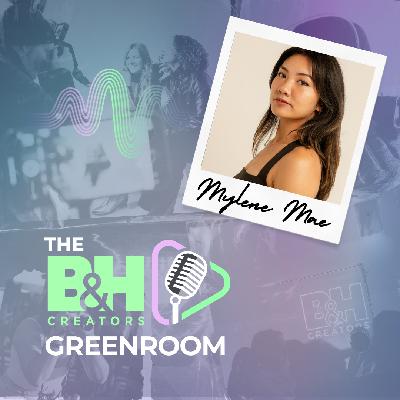
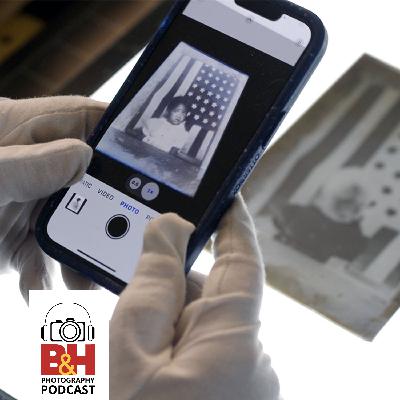

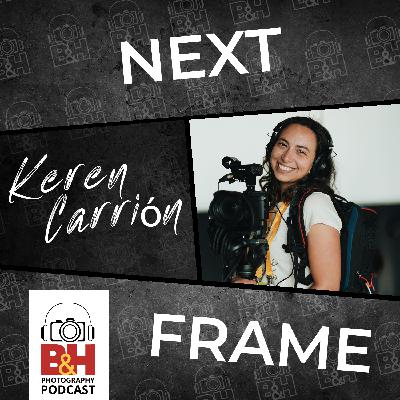
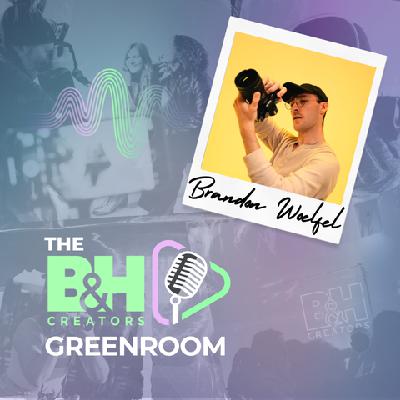
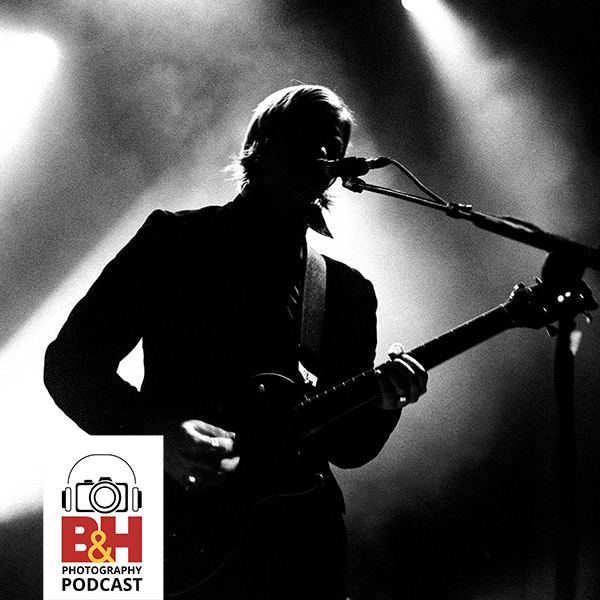
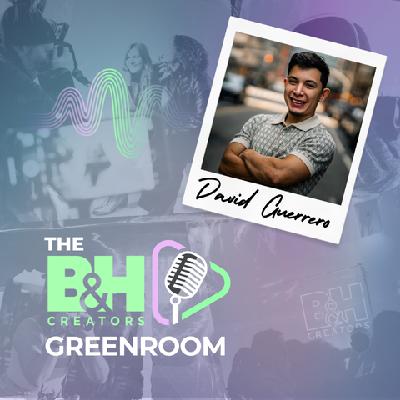

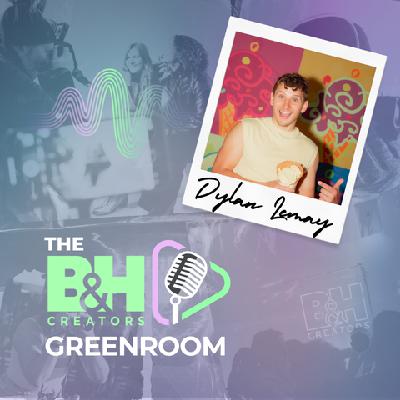
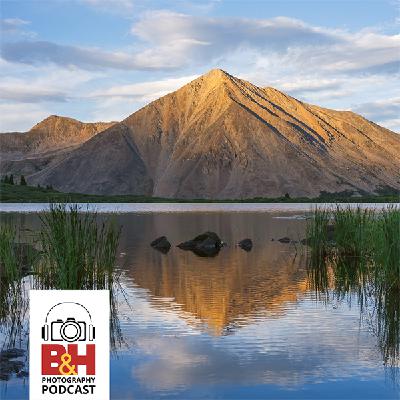

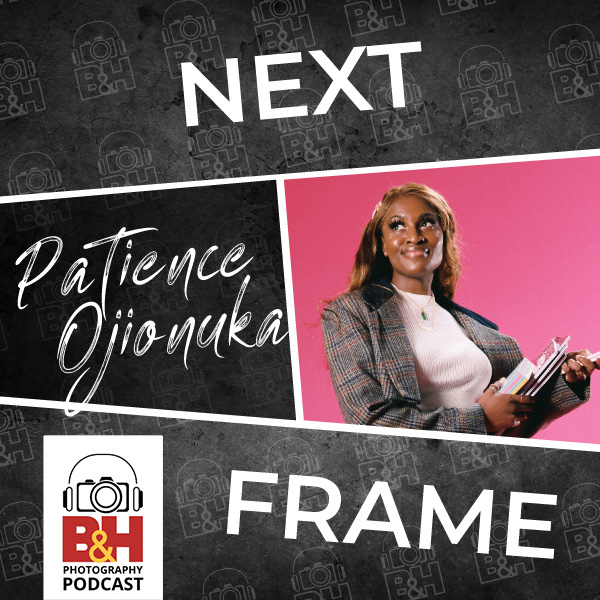

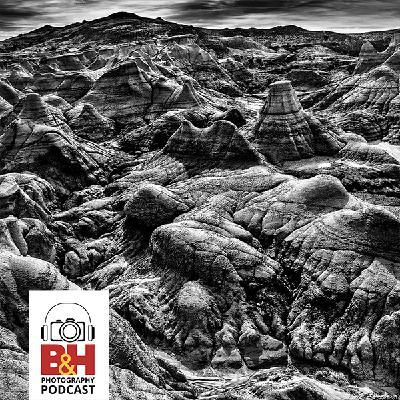

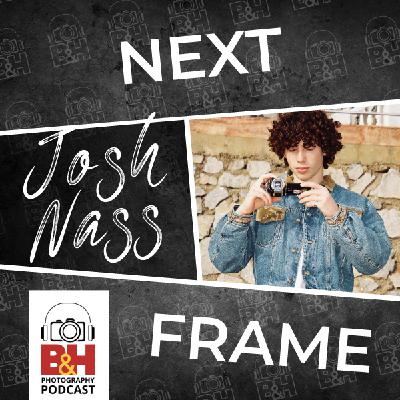
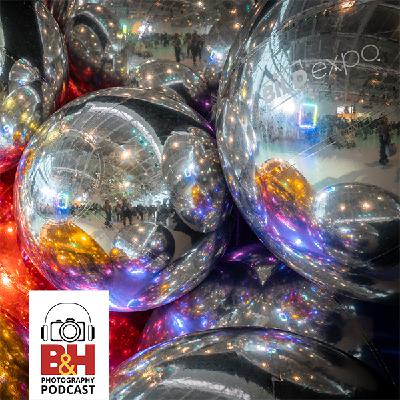
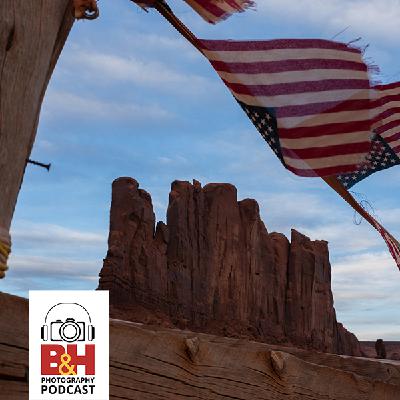
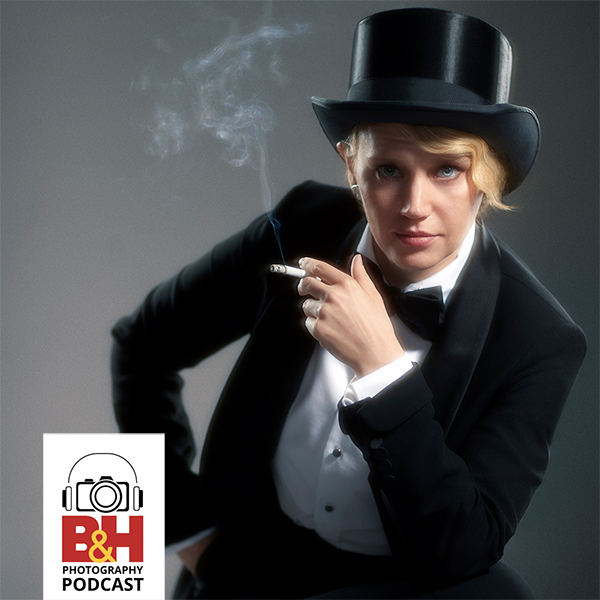
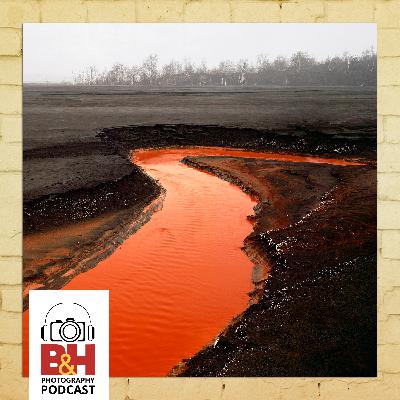



Why is the age range capped at 28? Seems like a very low age range.
is this guy serious? is anybody actually this pompous?
five stars!
I love the B&H podcasts but I didn't like the Greg Gorman one. He came across to me as a bit of a tosser. his work is good, but it,s not as good as he thinks it is. It's probably the subjects that make it interesting. But in fairness, I find portrait photography as dull as dish water. anyone can take a good photo when they have time to fiddle with the lighting. and then fix it up in photo shop. That's for photographers who are to lazy to get up in the morning to chase the light. what's in the shot is in the shot. if you have to edit it then it's not the photo you took, it's the one the computer created.
First and last time I'm listening to that rubbish, it's incredibly hard to believe such a trusted company as B&H can actually be paying someone to make such a truly terrible webcast. The first 4 minutes was all "and this is our sponsor, they're great!!" and "this is blah blah Instagram, follow this!" and more loud, inane drivel. And has this guy actually listened back to his own voice and delivery style and thought he's going a good job?! Talking about "exposure bucks" for 5 minutes is like attending a Dan Winters class and all he talks about is the rule of thirds. Total waste of time, don't bother with this webcast.
My God stop talking over your guest.
I love listening to b & h podcasts very useful information.
My most trusted source of camera information. They know what they're talking about.
excited about this!
Very useful info!!
👍
Great!
Amazing.
Amazing podcast! Such great info, advice, and dialogue on photography!
The best photography podcast out there, great insight into methods of photography with detailed and researched staff
I like listening to these great ideas while commuting. it gets my creative juices flowing.
it's time for a new camera my XE1 has run its course. The money I saved for a new kit can be put towards additional lenses if I win!
Looking forward to new episodes!
So awesome to have a photo centric podcast to listen to!
This podcast is powerful, it should be apart of B & H YouTube Podcast with images from Greg's work where it will have a more powerful impact.